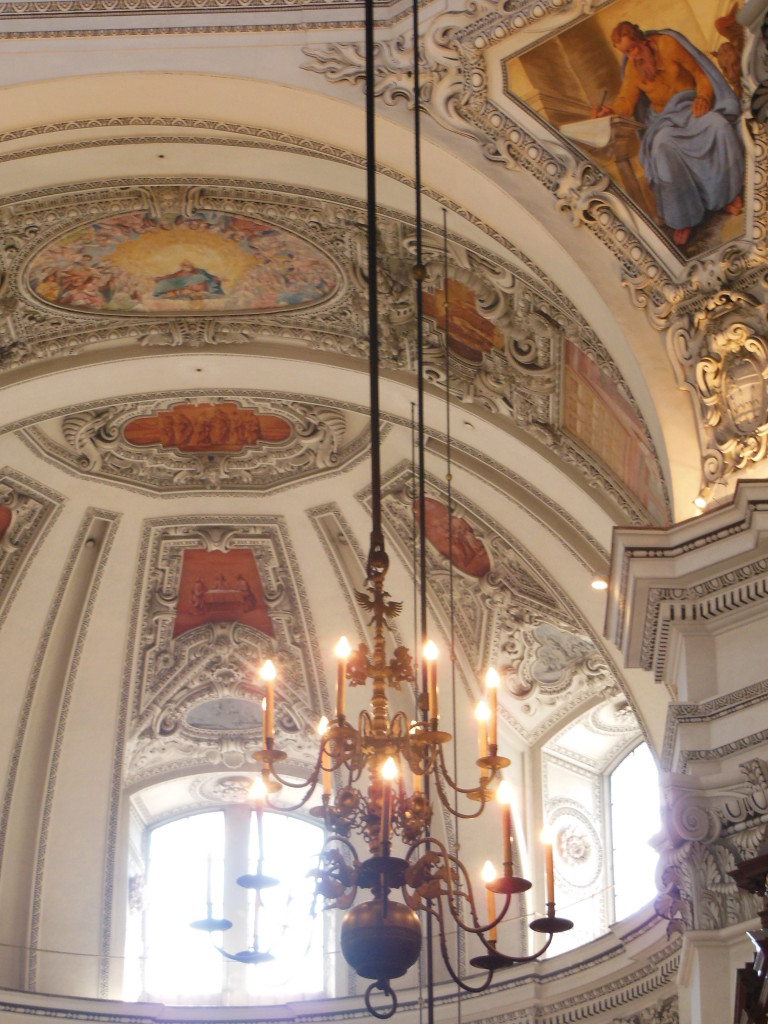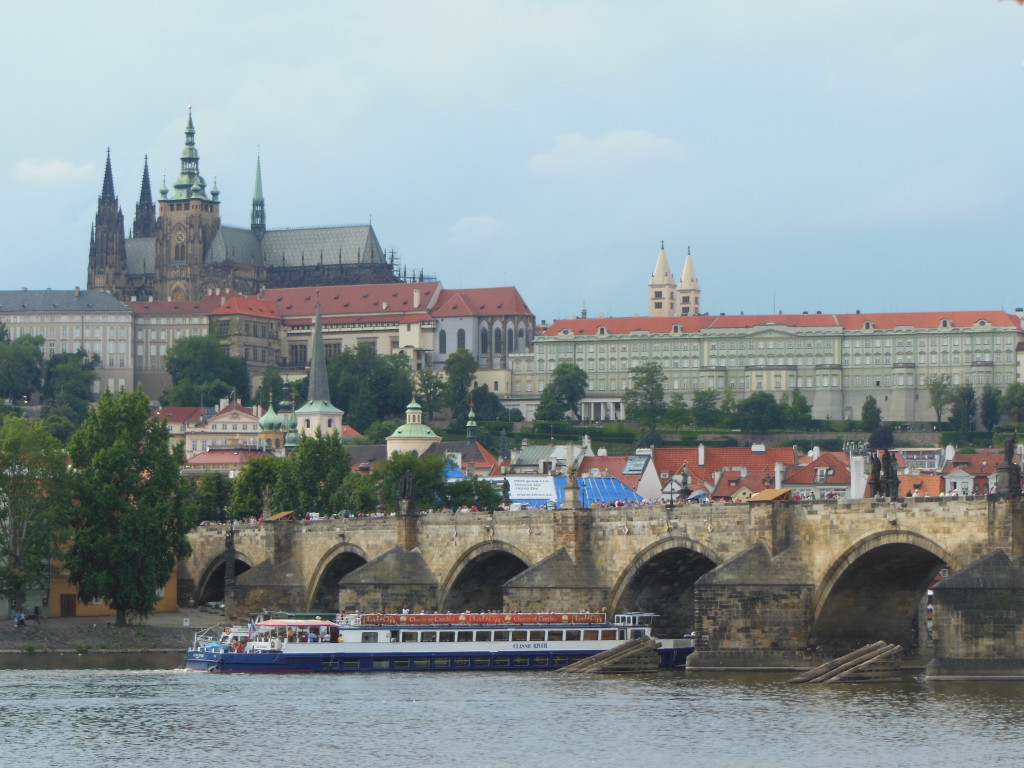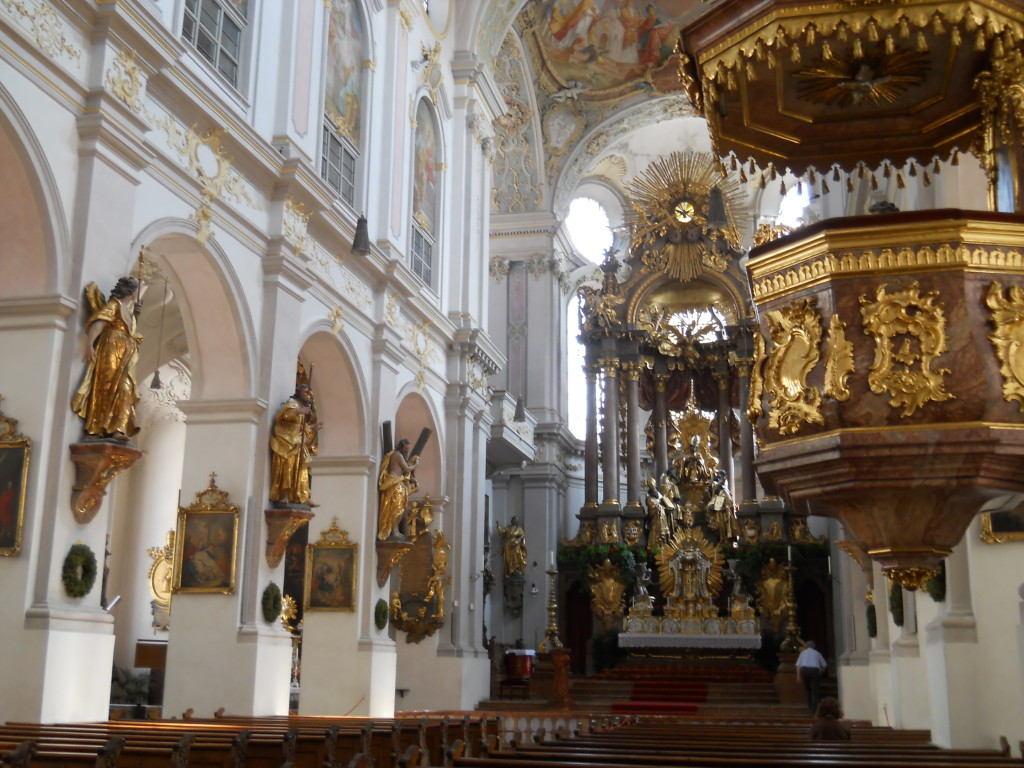Attending Mass in the Salzburg Cathedral was the most memorable experience of a wonderful trip to Europe this summer. The building’s interior was beautifully ornate, but not gaudy. The music included organ, orchestra and, I think, more than one choir. Add to that, the awareness that this was the very church at which Wolfgang Amadeus Mozart was christened. In his role as Court Organist, Mozart composed much of his sacred music almost exclusively for this Cathedral.
I had three very strong impressions during this mass.
It’s Not About Me
The first impression–it’s not about me.
The organ, choirs, and orchestra are placed behind and far above the congregation. This placement reinforces the idea that I am not the primary audience for their performance–I can’t even see them.
Back home, it’s not about me either, but the praise band occupies the same place as a performance band, so I have to deliberately remember that they aren’t performing for me. I have to work pretty hard to remember that it doesn’t matter if I don’t like the style in which one of the songs was presented. Nor does it matter that I don’t “feel” like praising God today; he’s worthy of my praise regardless of how I feel. The sermon’s relevance to me is not the standard by which it ought to be judged. Everything in any church service is directed toward the worship of the triune God. But back home, sometimes I forget.
It’s obviously not about me when the whole thing is in German, and I don’t speak German. I ended up thinking about how the audience of every service, is God; he speaks German. He also “speaks” Evangelical, and Reformed and Catholic. I imagined how rich God’s experience of worship must be when he is being praised simultaneously in every language and cultural expression that there is and ever was.
Then there were the pews. Even in this most beautiful of churches, the uniquely carved benches are not comfortable–at all. The seat is set at 90 degrees to the back, which has a board running across it as an elbow rest for the kneeler behind me. This makes it very uncomfortable to lean back. These seats were definitely not designed with my comfort in mind. It certainly is not about me.
The chairs back home are super-comfortable.
The Very Best
Everything in this Mass represents the very best of human ability. I’m talking about architecture, craftsmanship, beauty, painting, and music. Every sense encounters something incredible.
Back home, this was not the compulsion for the design of worship and the worship space. The music and the technology that amplifies it is top-notch, and the space is beautiful, but not extravagantly so. My church back home was designed with the principles of stewardship and utility in mind. That’s fine, but it’s a whole new experience to worship God in a space that is extravagantly beautiful. It seems like a better mode to worship God through beauty rather than utility.
My Third Impression–Grace
If I combine my first two impressions . . .
All that excellence which I so enjoyed doesn’t exist for me at all. All that I see, hear and enjoy are pure grace.
The grace I receive through the worship service in my home church is no less than that with which I was overwhelmed that Sunday morning in Salzburg; the only difference was my awareness of it.




